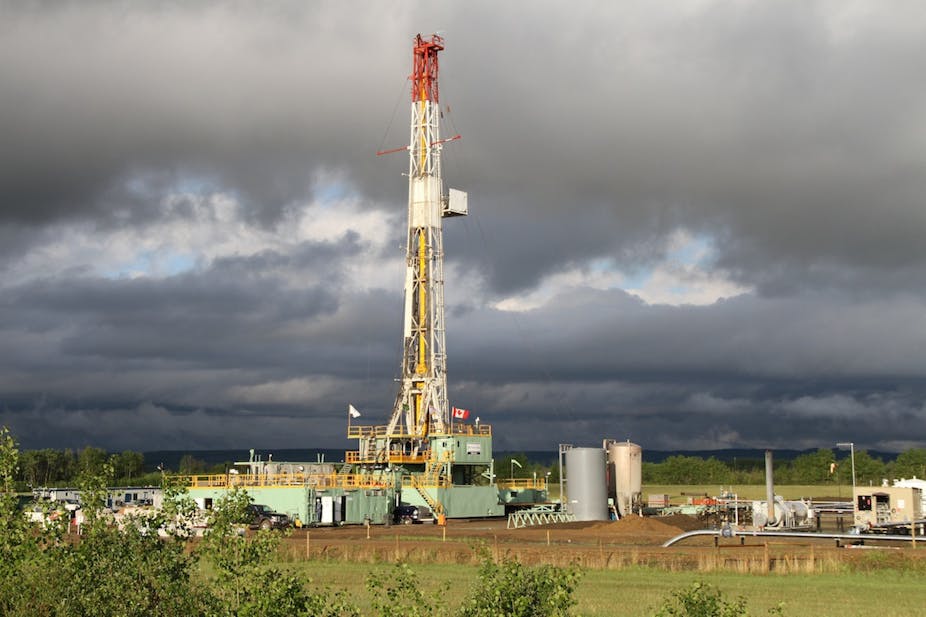If fracking is to be a viable option for energy production, the industry must find a way to deal with the naturally occurring radioactive materials (NORM) that are released as a byproduct of the process. These radioactive materials and their environmental consequences must be accounted for.
Radioactive substances occur naturally within the shale rocks that contain gas resources. These include uranium and thorium, and their decay products such as radium and radon. While the uranium and thorium are immobile, over millennia the radium has dissolved into the water trapped in the pores of the rocks when they were formed, along with high concentrations of dissolved minerals.
The process of fracking involves pumping water and chemicals deep under ground to break apart the shale rocks and release the gas they contain. Much of this water returns to the surface as flowback, bringing with it pore fluid released from the shale. The initial flowback mainly consists of the clean water that was injected, but once most of this has returned to the surface the fluid will contain a higher proportion of pore water. This means increasing levels of radioactive radium and dissolved radon gas.
Radon will be present in the gas stream, just as with conventional gas resources, but generally at very low concentrations. It is minimal enough to fall under the radar of radioactive substances regulation. But the concentration of naturally occuring radioactive material that is found in the waste water, principally radium, is high enough to be of regulatory concern.
Concentrations of NORM in the flowback must be monitored, along with the deposits of scale and sludge that get left on the inside of pipes and other equipment.
These issues are similar to those that arise during conventional oil and gas production, which also generate large volumes of water as a by-product of extraction. But the amount of NORM in water found in conventional oil and gas reservoirs tends to be lower than in shale gas flowback.
In offshore fields such as those in the North Sea, the majority of water that is produced is discharged directly to the sea. For onshore fracking sites this will not be possible of course, and neither will it be possible to dispose of the waste water by injecting it back underground. This is because once fracking has taken place, the permeability of the shale remains low, making re-injecting the waste water difficult. Regardless, the addition of fracking chemicals means this would not be allowed even where it might be possible.
Dealing with waste
Fracking produces very large volumes of waste water and, due to the concentration of NORM it contains, a permit is required to manage it. As yet, there is no economic way to clean up the waste water for drinking or irrigation purposes, but other dissolved minerals and rock debris can be removed to allow its reuse to frack additional wells. Reusing flowback like this minimises the volume of water used in fracking, but does not avoid the problem of having large volumes of radioactively contaminated waste water that needs to be managed.
Some estimates suggest widespread exploitation of the UK’s shale gas reserves would increase the national waste water treatment requirement by as much as 3%. And conventional waste water treatment methods are generally not able to remove the radioactive materials effectively.
Though the technology to remove radioactive contaminants from waste water exists, it is both expensive and difficult, depending on the concentrations of other contaminants that are present. It’s also not readily available for treatment of the volumes of waste water likely to be produced as a result of the full commercial exploitation of UK shale gas.
The management and disposal of the scales and sludges left on exploration and production equipment will also be an issue for the shale gas industry – though treatment technologies and disposal routes for are more readily available.
The UK’s nascent shale gas industry must have a plan in place to deal with the byproducts of fracking. It will require careful management to ensure that any radiological material does not become a health or environmental hazard.

